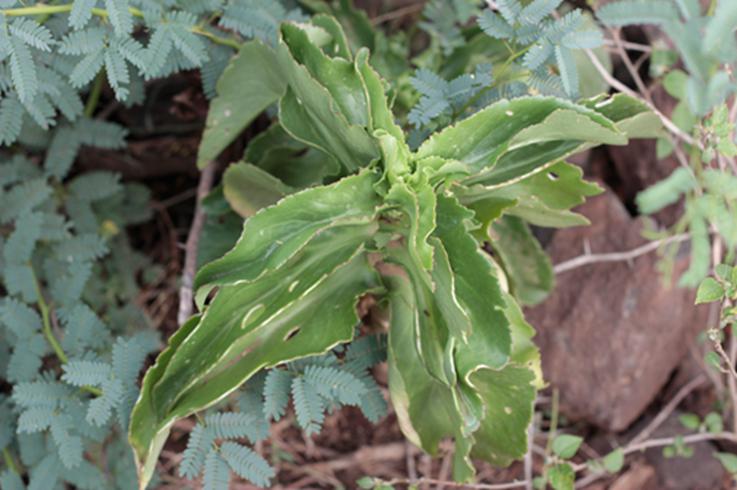Joylene Jepkemoi Kanyaris
Other projects
27 Feb 2017
Harnessing Indigenous Knowledge for Biodiversity Conservation and Management of Lake Bogoria National Reserve, Kenya
While the protected landscapes of Lake Bogoria National Reserve are limited in capacity to conserve biodiversity, complimentary habitats are rapidly degrading creating the need to reverse the trend. Succulent plants are thematic group of interest in conservation and trade; they grow in habitats with fragile ecological equilibrium where harsh environmental conditions lead to slow growth and reproductive rates. The unregulated removals of mature plants for trade and the intense habitat destruction emanating from anthropogenic activities currently threaten this iconic functional group. This study aims at assessing the species diversity, richness, distribution and the indigenous knowledge related to the succulent plant of Bogoria.

Kalanchoe lanceolata.
Kenya is relatively rich botanically due to the wide geographical distribution, diverse climatic conditions and soil types. Of the total floristic diversity of Kenya, about 5% of the species are succulent in nature composing of about 428 taxa belonging to 20 families and representing 51 genera and 370 species. However, the list is understated due to several factors including the restricted access to some sites due to logistical or political reasons. Succulent plants are of interest in conservation and trade; the commercial succulent species of Bogoria such as; Aloe secundiflora and Aloe turkanensis are listed under Appendix 2 of the Convention on International Trade in Endangered Species of Wild Fauna and Flora (CITES). Pursuant to this convention, materials from endangered species should be obtained from sustainable sources. This study aims at assessing the species diversity, richness, distribution and indigenous knowledge related to the succulent plant of Bogoria. It also aims at setting up succulent plant nursery to enable the locals domesticate the plants in their farms hence reducing the pressure on the naturally occurring plants.
Lake Bogoria National reserve is a Ramsar site and a world heritage site of high conservation value. According to plant diversity inventories, the reserve and the surrounding landscapes host 210 plant species belonging to 53 plant families. Among these are 38 species of Graminae and 15 of Acanthacea. These species are distributed in 6 broad vegetation type namely riverine forest, wooded bush land, bushed thicket, bush land, bushed grassland and swamps. The community occupying the environs of this reserve is an agro-pastoralist community with a population of 10,816 people (according to 2009 census).